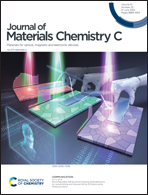Multi-factor-controlled ReRAM devices and their applications
Abstract
Resistive random access memory (ReRAM) based on a resistive switching (RS) effect is a new type of non-volatile memory device that stores information based on the reversible conversion of resistance states controlled by an electrical pulse. The RRAM has many advantages such as high read/write speed, high storage density, and low power consumption. In particular, many recent studies have found that the conversion of resistance states in some RRAMs can be controlled by extra factors except electrical pulses, such as light, magnetic field, mechanical force, moisture, temperature, acid-base (pH), and so on. The multi-factor-controlled ReRAM devices are expected to be used in the manufacture of multistate memory for information processing, special sensors and neuromorphic applications; thus, it can be expected to be used in multifunctional devices with wider applications. Therefore, the development of multi-factor-controlled ReRAM devices is of great significance. In this review we discuss the research progress, current problems, and future development trends for the multi-factor-controlled ReRAM devices for information processing, neural sensing and neuromorphic applications in artificial intelligence.



 Please wait while we load your content...
Please wait while we load your content...